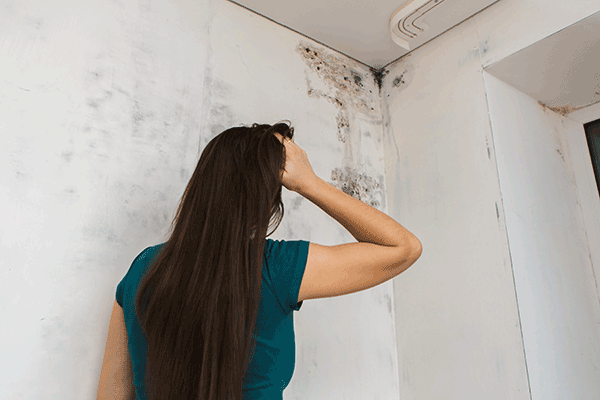During the holiday season, holiday cheer isn’t the only thing in the air.
Unfortunately, colder temperatures can bring moisture and -you guessed it – mold growth. Although intuitively you would think mold growth decreases during wintertime, that is not the case. Mold growth is actually a year-round problem.
Why does mold grow during winter?
Extra rain and, in some cases, melting snow and ice are all contributing factors for increased moisture levels during winter. Once mold spores that may be floating through the air land on a damp surface or object, mold spores begin growing. Mold exists in all indoor environments and while there’s no way to prevent mold spores from growing completely, there’s a lot you can do to limit the growth of mold inside your home or commercial building.
How to prevent mold growth during winter
The key to preventing indoor mold growth during the generally wetter winter season is by controlling moisture and keeping your home clean and well-ventilated. Below, we’ve included some tips on how you can limit moisture to prevent mold from growing.
Keep humidity low and air moving
According to the Environmental Protection Agency (EPA), residents should strive to keep the humidity level in homes below 60%. Some of the ways to lower the humidity indoors include:
- Taking cooler showers,
- Not leaving wet clothes and towels sitting in your laundry basket,
- Avoid laying fabric mats in areas that are often exposed to moisture, like your bathroom or basement,
- Move your houseplants to a well-ventilated area, and
- Consider investing in a dehumidifier
Properly insulate mold-prone areas
Since we tend to use our heaters more often during the winter season, it is extremely important to be mindful of the popular places that mold likes to grow, like your attic. When rising heat from your heater meets colder areas, like attics, condensation is created — the perfect home for mold. Therefore, it’s important to ensure insulation between your attic and living area is working properly.
Other places to monitor include windows (and windowsills), kitchens and underneath countertops, bathrooms, and anywhere else that may be prone to leaks or flooding.
It’s also important to note that if you plan on storing your summer gear in your basement, garage, or other out-of-the-way areas, those items need to be clean and dry before being stored. If it’s possible, try and store your gear in plastic tubs and preferably on shelving units that are elevated off the floor.
Some common areas you may want to consider monitoring for mold growth during winter months include:
- Walls and wallpaper,
- Roofs,
- Windows and windowsills,
- Pipes,
- Cardboard,
- Wood,
- Ceiling tiles,
- Insulation,
- Upholstered furniture,
- Clothes,
- Books, and
- Toys
Protect your home’s exterior
Roofs, rain gutters and downspouts are also areas prone to mold growth. As far as your roof is concerned, check for loose or missing shingles, inspect for leaks around your chimney, as well as, plumbing, attic vents, and skylights. You would also be well-served to remove tree limbs near your roof that could potentially break and fall through your roof.
With your rain gutters and downspouts, make sure they are securely and properly attached to your home and that they are clear of leaves, branches and other debris.
Get a mold test to protect your property and family’s health
If you believe your home or building is suffering from harmful mold, you should strongly consider having a mold test performed on your property. Only an experienced and professional mold testing company can determine whether mold exists and whether that mold poses a health threat to you and your family.
The experienced team at Rarefied Air Environmental have been providing residential and commercial mold testing in San Diego for nearly a decade. Our experts can help you identify the source of mold (if it exists) and create a comprehensive plan with a scope for mold work. Call us today to learn more.

